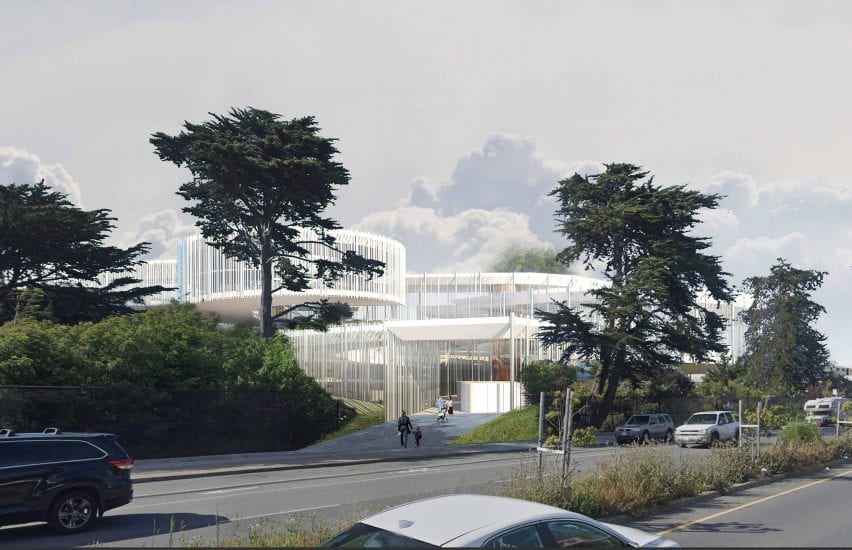An aquarium designed to protect marine biodiversity and a healing centre using horticultural techniques to help treat mental illness are included in our latest school show by architecture students at the Academy of Art University.
Other projects include a “public living room” that blends neighbourhood life with areas for privacy and a residential hub designed to enable economic self-sufficiency for residents.
School: Academy of Art University, School of Architecture
Courses: M.Arch M.Arch2 B.Arch MA and BA
Tutor: Mark Mueckenheim, David Gill, Nicole Lambrou, Sameena Sitabkhan, Eoanna Harrison, Philip Ra and Mini Chu
School statement:
“We are a progressive design laboratory of highly passionate students and a distinguished faculty of practising architects who work together to explore the boundaries of architecture. Our interactive onsite and online studio experience harnesses digital tools to mentor students throughout our rigorous curriculum.
“We offer an excellent design education by developing each student’s capacity to synthesise critical thought, architectural vision, and technical comprehension. Our programmes engage with current global issues, empowering students to be change-makers and leaders advocating for social equity. Our diverse international community enables us to propagate a unique cultural response to build a better world.”
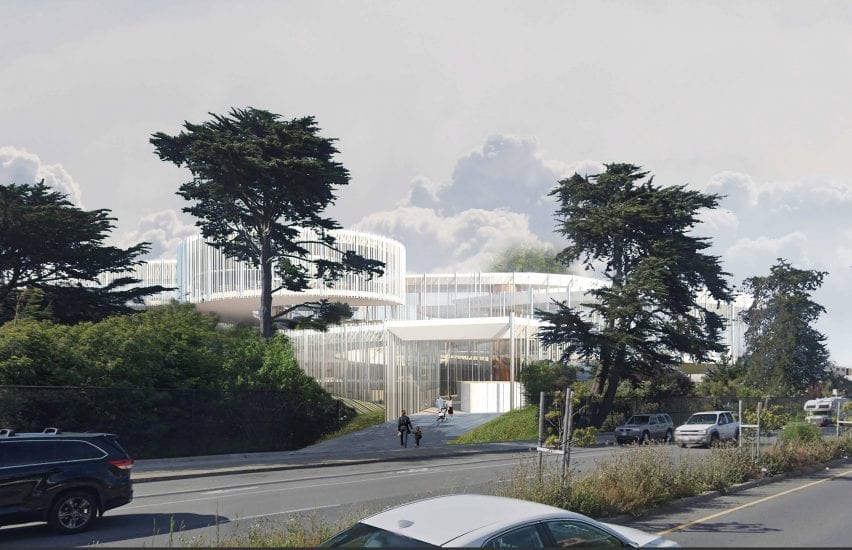
Outer Mission Ramp Library – a knowledge connector for rapidly changing communities by Yi Hsien Rachel Wang
“The typology of library buildings has evolved throughout history, reflecting the changes in information systems and learning activities. By combining social, functional and environmental benefits, the thesis is projecting a new sustainable library typology as a prototype for a public learning infrastructure.
“The main conceptual idea is to design the library as a continuous ramp, connecting previously separated areas in the diverse local city fabric. The architectural intervention shortens the neighbourhood’s physical and social distances by combining pedestrian bridges, casual and formal learning infrastructure as a public living room for residents to gather, work, exercise and entertain.”
Student: Yi Hsien Rachel Wang
Course: Master of Architecture Thesis
Tutor: Mark Mueckenheim
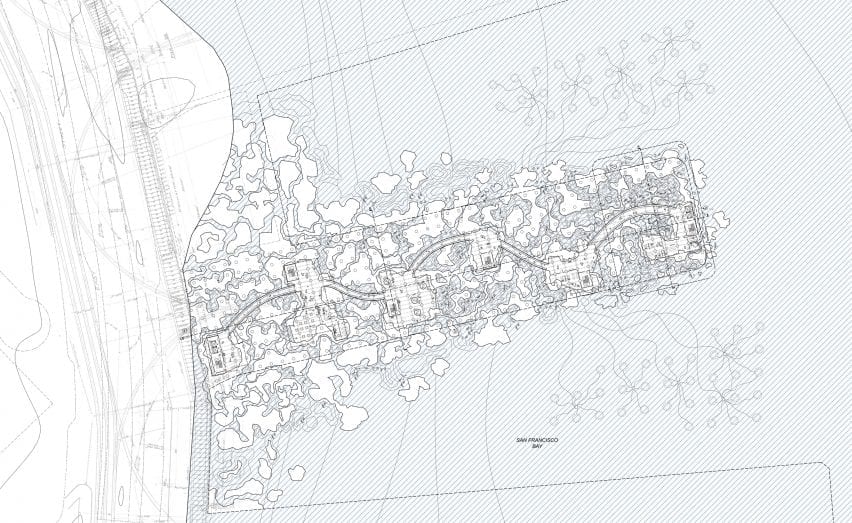
Self-generating Architecture: Pier 28 by Valeryia Haletskaya
“The design for a hybrid aquarium and research-development centre at Pier 28 on the San Francisco waterfront employs organic, metabolic and self-generating materials. Artificial organisms – protocells that in time grow into artificial limestone – help to decrease levels of carbon dioxide while reinforcing the existing structure and building its sea-wall reef, skeleton, and envelope.
“Researchers, students and visitors share spaces for learning, interaction, and collaboration. The scheme offers protection for marine species and enhances biodiversity. The living architectural intervention is aimed as a long-term solution for coastal cities and other areas at risk from storms surges due to climate change.”
Student: Valeryia Haletskaya
Course: Master of Architecture Thesis M.Arch
Tutor: Mark Mueckenheim
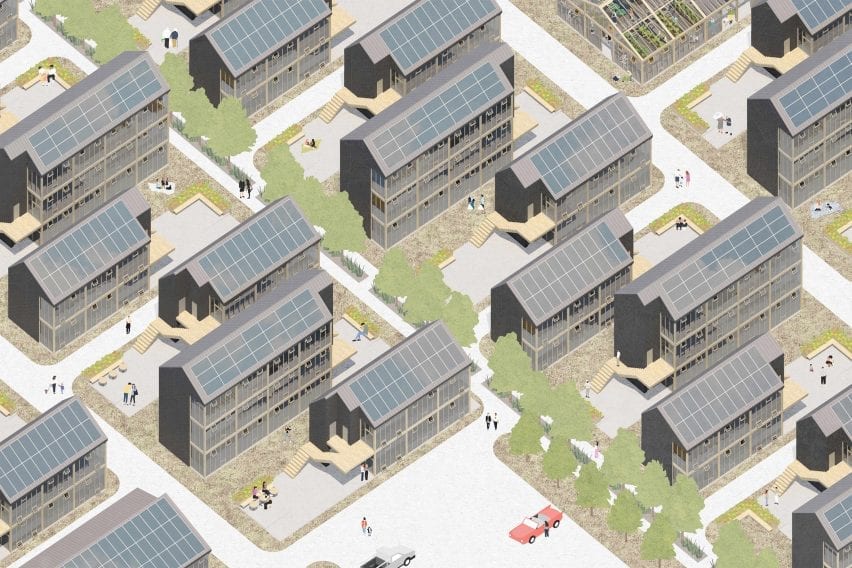
Outer Mix Investigating mixed-use development as a means to fostering a healthy year-round community on the Outer Cape by Christian Fish
“A lack of affordable, year-round housing has become an urgent crisis on Cape Cod, afflicting low and middle-income families depending on a largely seasonal economy. Outer Mix imagines a new residential, social and economic hub on a 10-acre area in the Eastham Corridor Special District.
“Organised into four blocks repeated throughout the site, 95 residential units are combined with nearly 30,000 square feet of economic and social programming. This includes artist studios, co-working spaces, cafes, a library, daycare and community greenhouse. This programme mix enables economic and sustainable self-sufficiency and a community for residents.”
Student: Christian Fish
Course: Master of Architecture Thesis
Tutor: Nicole Lambrou
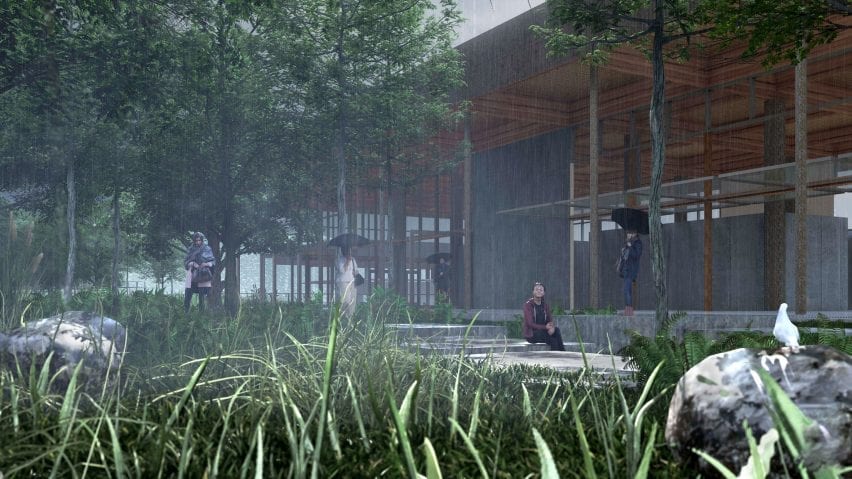
Eco-Tecture – Unifying Ecology with Architecture by Kevin Brady
“How can architecture enhance, improve and support educational and public awareness of the conservation and preservation of our local natural resources? Exposure and access to the elements of nature enliven the spirit, inspire curiosity, and encourages a ‘critical thinking’ response while promoting a healthy interactive lifestyle.
“This thesis seeks to determine how architecture could positively impact an ecological setting that strengthens community health, productivity, conservation and ecological awareness. This design approach engages user groups with the natural environment while preserving the ecological habitat.”
Student: Kevin Brady
Course: Master of Architecture Thesis
Tutor: David Gill
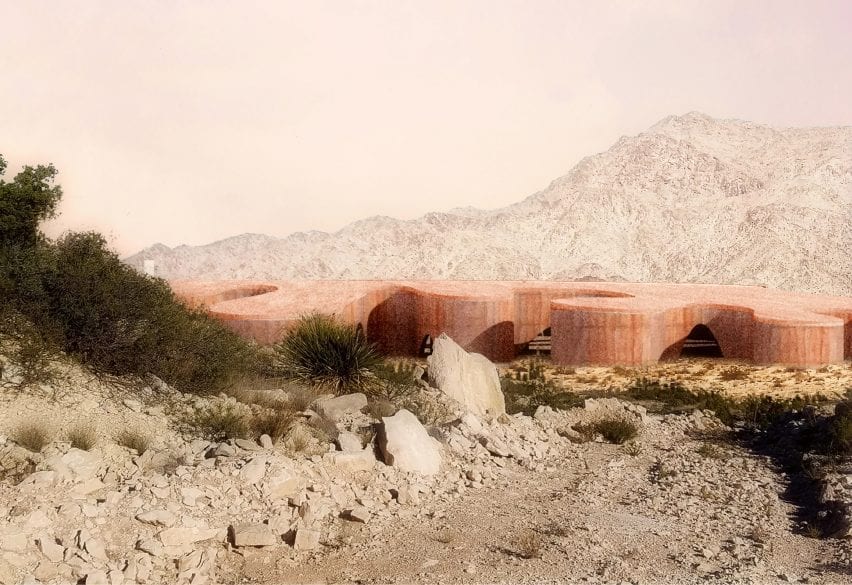
A Living Architecture by Aishwarya Naidu Bobbili
“This project is a healing centre incorporating earth and plants into its form and structure to create a holistic, sustainable space for wellness and rehabilitation. Farming, nature and architecture form a dialectic relationship. Horticultural techniques such as pleaching aid in the treatment of mental illness and serve as a therapeutic strategy.
“Located in Bakersfield, near Oil City in Kern County, California, the site is near the highest polluted city in the United States. The project aims to aid in healing people with a tranquil environment that incorporates sustainable and biophilic design.”
Student: Aishwarya Naidu Bobbili
Course: Master of Architecture Thesis
Tutor: Mark Mueckenheim
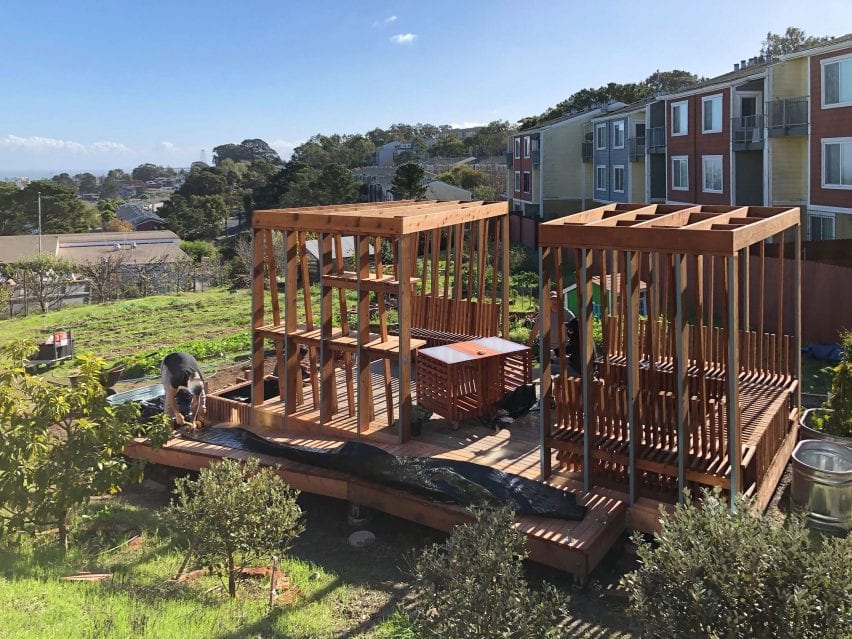
Unity Pavilion for Northridge Cooperative Housing by Naomi Rojas, Shunyi Yang, Dylan Ingle, Rhonuel Domingcil, Fabio Lemos, Corona Xiaohuan Gao, Malak Bellajdel, Kenta Oye, Jacob Delaney, Harikrishna Patel and Daniel Cervantes
“A design-build project by the B.Lab group, the pavilion fosters cooking, eating and storytelling within a community garden in the Hunters Point neighbourhood of San Francisco.
“Due to a lack of access to healthy, affordable food in the area, the pavilion integrates counters, benches, and a movable kitchen table for cooking demonstrations using produce directly from the garden, while a series of frames offer shade and a vista of the bay.
“The design was derived from several communities and youth workshops together with feedback from garden volunteers, and the pavilion was measured and tested on full-scale prototypes before construction.”
Student: Naomi Rojas, Shunyi Yang, Dylan Ingle, Rhonuel Domingcil, Fabio Lemos, Corona Xiaohuan Gao, Malak Bellajdel, Kenta Oye, Jacob Delaney, Harikrishna Patel and Daniel Cervantes
Course: B Arch Collaborative Project / Building Lab – b.Lab / ARH 498
Tutor: Sameena Sitabkhan, NOMA and Eoanna Harrison, AIA
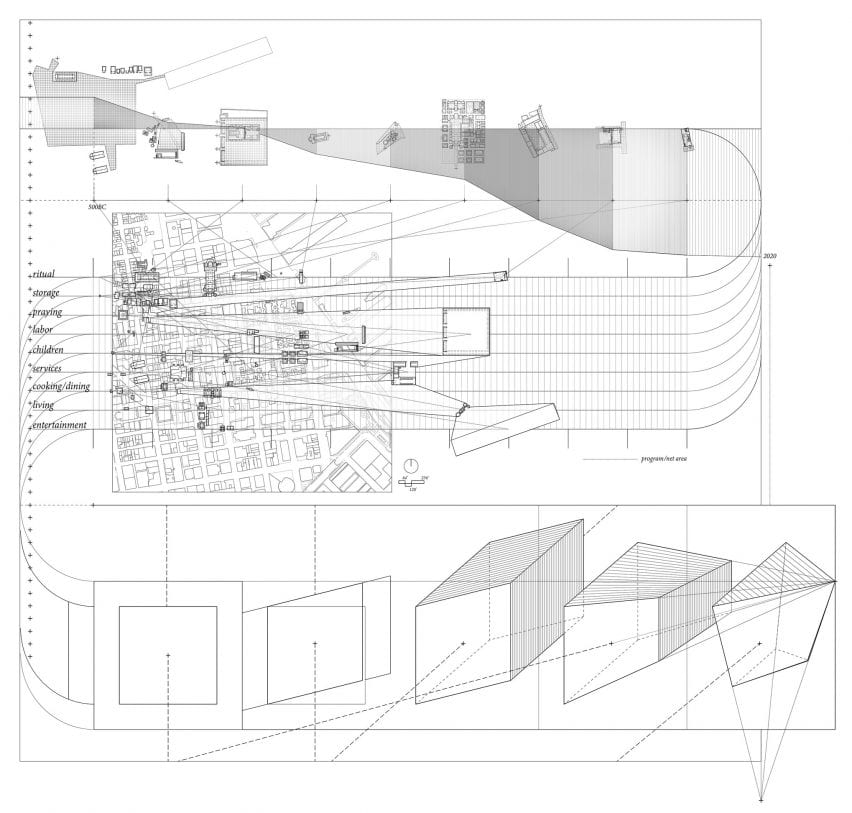
Sign-Up Sheet by Daniel Joonhee Lee
“The project investigates the relationship between the sacred and the political, and the role of the autonomous citizen therein. Sign-up sheets are simple yet contractual.
“Where public services are exchanged, they are activating devices bringing citizens together to achieve common goals. Sacred architecture has been a beacon of alternative governance by becoming places of refuge and political action.
“This thesis frames those events as distinct from the economic agenda of neoliberalism. Sign-Up Sheet reimagines the site with an urban sanctuary in San Francisco’s Tenderloin where non-profit staffs and community members live and work in a hub of collective activity.”
Student: Daniel Joonhee Lee
Course: Bachelor of Architecture Thesis
Tutor: Philip Ra and Mini Chu
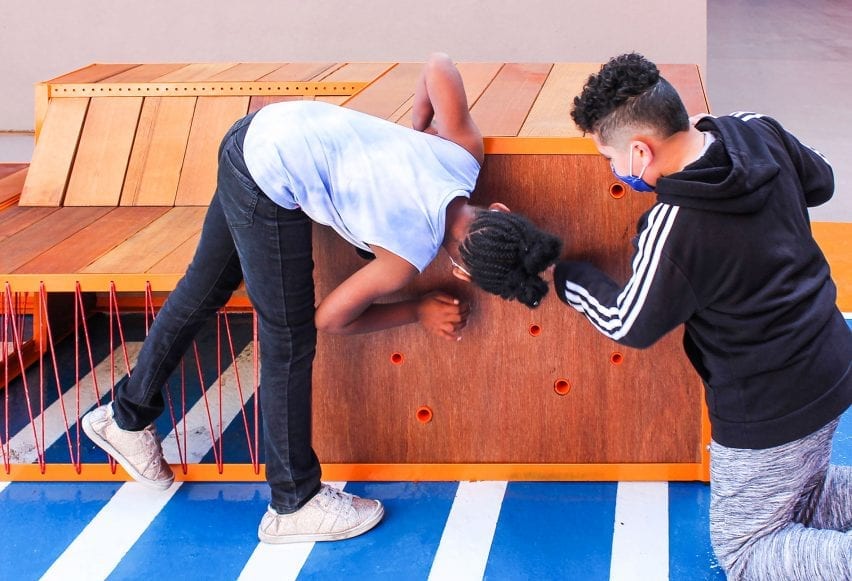
Kid of Parts for the Bayview Commons Apartments by Adam Nuru, Markish Siojo, Dylan Ingle, Fabio Lemos, Xiaohuan Corona Gao
“Through a series of community events at the Bayview Commons Apartments, an affordable housing community in San Francisco, we learned that residents wanted an active, intergenerational, and flexible space that allowed for relaxation, interactive play and community events.
“Our final design incorporates a set of flexible, movable furniture that can be set up in different configurations. Intergenerational play, imagination, and socializing are emphasized through the design of different panels on the modular pieces. The colourful groundscape is coded to give clues for spatial use and provide a vibrant surface that complements the colours of the wall mural.”
Student: Adam Nuru, Markish Siojo, Dylan Ingle, Fabio Lemos, Xiaohuan Corona Gao
Course: B Arch Collaborative Project / Building Lab b.Lab / ARH 498
Tutor: Sameena Sitabkhan, NOMA
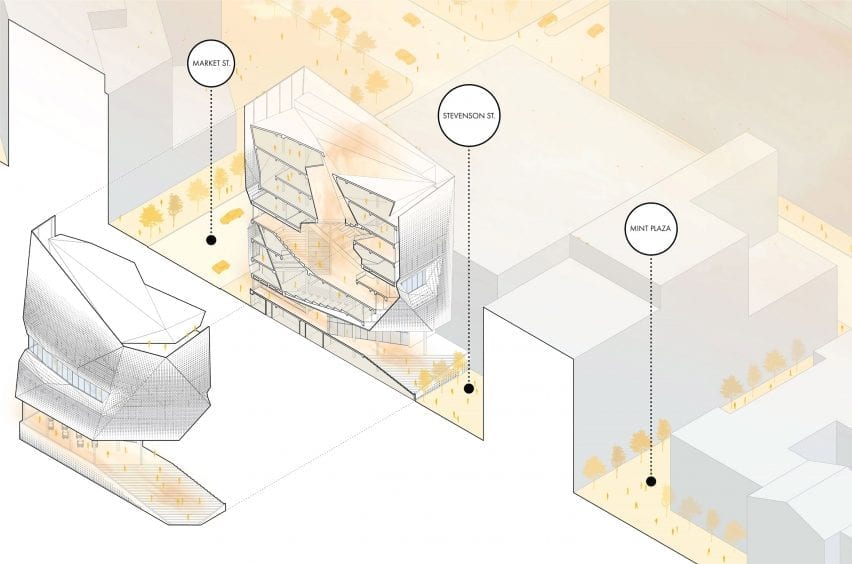
Infilling the Void by Kenta Oye
“Urban planning in San Francisco has confined ethnic neighbourhoods to inhuman spaces. My ancestral heritage includes the repeated displacement of the Japanese community to unwanted or forgotten territories.
“The design reveals the lost layers of the site – where the first Japan town took root in 1900 – by activating the alleys, offering a cultural centre that borrows from museum and immigration centre programmes.
“The act of making was the catharsis that enabled this community to cope creatively. Ceramic, wood, and sewing galleries are paired with adjacent workshops, providing spaces to congregate, exchange ideas and share experiences through craft.”
Student: Kenta Oye
Course: Bachelor of Architecture Thesis
Tutor: Philip Ra and Mini Chu
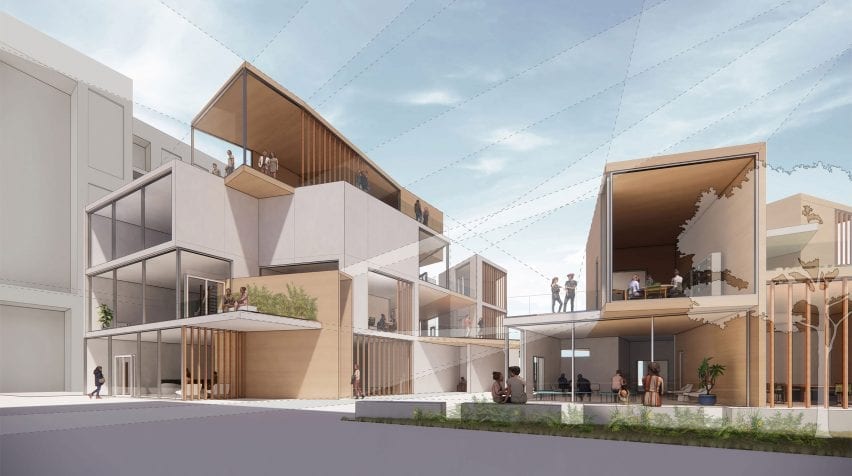
Urban Living Room by Zoe Qiaoyu Zheng
“The project brings neighbourhood life into public space while blurring boundaries and creating conditions of privacy. Public programmes and varied open spaces blend traditional library and private spaces with adjacent buildings.
“The design responds to natural light, wind, and views but also create opportunities to block visual contact with adjacent residences. People are welcome to celebrate their time here, and the architecture makes invisible boundaries to protect their personal space as needed.
“This is not just a library or another place to hang out; the proposal also provides opportunities for people to safely interact in acceptable proximities.”
Student: Zoe Qiaoyu Zheng
Course: Bachelor of Architecture Thesis
Tutor: Philip Ra and Mini Chu
Partnership content
This school show is a partnership between Dezeen and the Academy of Art University. Find out more about Dezeen partnership content here.

